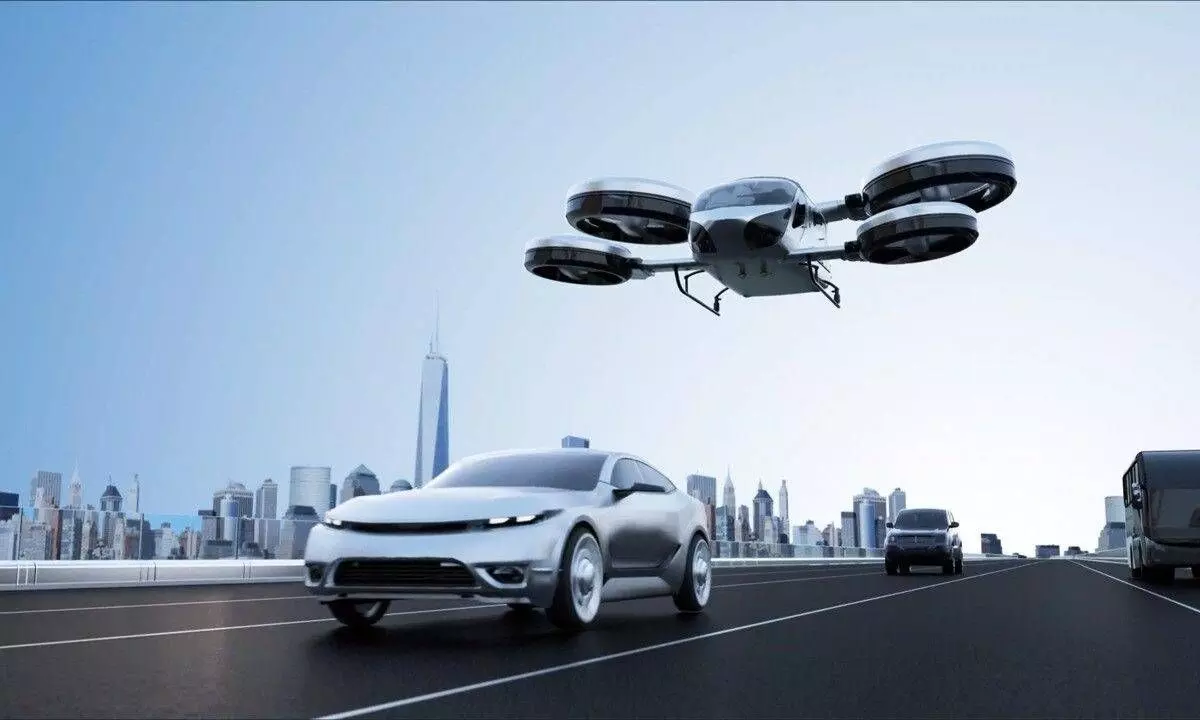In ‘Advanced Aerial Mobility’ is the future of air transport system
The passenger segment is expected to grow at the highest CAGR
image for illustrative purpose

Advanced Air Mobility (AAM) is an air transport system concept that integrates new, transformational aircraft designs and flight technologies into existing and modified airspace operations.
The AAM concept creates innovative, yet cost-effective aircraft with a low-carbon footprint. NASA and other AAM proponents have promoted air vehicle designs “enabled by electrification and scaled through automation.” Thus, virtually all of the developed AAM vehicles have all-electric or hybrid-electric power systems, aside from some exploration into hydrogen-powered zero-emission aircraft. Many are highly automated to navigate from point-to-point safely without a human operator aboard.
Most of the designs fall into one or more of these types:
Electric vertical take-off & landing (eVTOL) designs focus on the on-demand air taxis, airport passenger transfers, patient transfers, rooftop-to-rooftop cross-town trips, and more. Some eVTOL have onboard or remote pilots; others have “self-driving” automated navigation;
Electric conventional take-off & landing (eCTOL) aircraft are used for short-range trips, small cargo deliveries, and passenger transfers from regional and rural airstrips;
Small unmanned aircraft systems (sUAS), also popularly known as drones or Unmanned Aerial Vehicles (UAVs), for videography, small package delivery and pick-up, transfer of medical supplies, etc.
In addition to advanced electric aircraft motors and power systems, the aviation and aerospace companies developing AAM/UAM solutions for unmanned aircraft need autonomous flight control systems. They vary from level 1 and 2 autonomy and the aircraft still requires human control but has pilot support systems up to a level 5 fully autonomous aircraft. This level of autonomy will require the developer to include electronic data sensors – from cameras and LiDAR scanners to inertial navigation systems (INS), GNSS receivers, and more — as well as signal processing to turn the information into “intelligent” decisions about navigation, compensate for system errors, and avoid collisions. Developers with experience and resources in these areas will enjoy an advantage.
This is expected to be a pivotal year for the advanced aerial mobility (AAM) market, as disruptive methods of aerial transportation are fast becoming the future of aviation. With the global market expected to be valued at $16.81 billion in 2025, and reach $110.02 billion in 2035, registering a CAGR of 21.7% , the rapid growth is seeing an influx of new inventive air freight and passenger transport solutions, along with new regulations, resources and infrastructure.
The global advanced aerial mobility market size is projected to be worth around $ 45.12 billion by 2030 and it is expanding at a CAGR of 22.45% from 2022 to 2030, as per latest study by Precedence Research.
The global advanced aerial mobility market size was valued at $ 8.93 billion in 2022. The next-generation commuting option is the hovering automobile, which can serve as a personal vehicle and a means of air travel. In addition, because of operational and infrastructural demands in urban commuting systems, the preponderance of self-driving cars is anticipated to include horizontal takeoff and landing technologies. Self-driving cars are anticipated to be employed on both a personal and professional scale to accommodate shifting commuting needs, particularly in urban regions. Compared to other types of transport, flying vehicles and cargo drones have higher testing and development expenses since they call for the fusion of numerous advanced technologies.
In 2030, the piloted category is estimated to hold more than double the consumer base, and it is anticipated that this share will hold sway throughout the forecast period. But in the approaching years, the automated segment is anticipated to have the highest CAGR.
By 2030, the cargo segment is forecast to contribute over two-thirds of the global market for sophisticated aerial transportation, and it is anticipated that this segment will maintain its lead throughout the anticipated timeframe. However, it is expected that the passenger segment would grow at the highest CAGR in the future years.
Set to transform the future of travel for people and cargo, the pace of innovation and advancements in future aerial mobility solutions are making it one of the fastest growing markets in aerospace.
Many companies hope to receive regulatory certification for their eVTOLs by the middle of the decade.
A future trip from San Francisco to Lake Tahoe could take under an hour by eVTOL, compared with almost four hours by car. Going from Zurich to St. Moritz would take about 30 minutes by air as against two-and-a-half hours by car.
While many hurdles remain for passenger advanced air mobility, entrepreneurs, incumbents and other industry stakeholders are prepared to tackle them.

